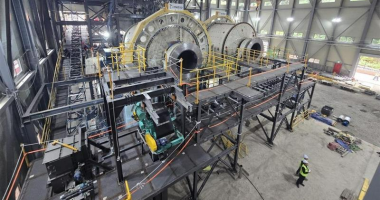- Construction technology company PARKD (PKD) is making tactile strides into the future of construction championing sustainability and smart supply chains
- The ASX-lister believes its patented parking infrastructure can withstand the growing sustainability challenges facing the construction industry
- PKD says its existing infrastructure can be reused in entirely different projects, while it keeps building materials to a minimum
- The company says it streamlines its process further by producing building materials, which are ready for assembly on site, ahead of time
- PKD maintains these methods allow it to deliver much-needed multi-storey car park solutions to the institutions that need them most
Construction technology company PARKD (PKD) is making tactile strides into the future of construction championing sustainability and smart supply chains.
As it continues to expand, PKD said it had already found its niche in a sector calling out for modern approaches and innovation.
Having already cornered the market as one of the leading construction technology players on the ASX, PKD added that its method could withstand the increasing sustainability challenges confronting the industry.
“PARKD is about this movement forward into the future of construction.”
PARKD Chief Executive Officer, Peter McUtchen
Sustainable infrastructure
No longer viewed as just an additional upside, sustainability is now a fundamental element in a business’s social responsibility strategy.
The expectations for most established companies to review their environmental practices have been raised significantly in recent years.
All industries are expected to assess and address their impact, with the construction industry — which is estimated to have produced 20.4 million tonnes of waste in 2017 — being no exception.
The Infrastructure Sustainability Council of Australia (ISCA) describes sustainable infrastructure as that which is “designed, constructed and operated to optimise environmental, social and economic outcomes of the long term”.
While some construction and demolition waste is unavoidable, PKD believes it operates in accordance with the ISCA’s definition by virtue of patented approach.
PKD’s parking architecture blueprint uses an accurate list of building materials, which minimises the chance of accumulating surplus materials. This has the added benefit of lowering costs.
Furthermore, PKD says the materials used in its building projects are completely reusable as they can be disassembled and utilised in a different project.
“We can reuse this structure pretty much down to the nuts and bolts of it – you can take it apart like Lego and use it somewhere else.”
PARKD Chief Executive Officer, Peter McUtchen
This means, for example, that a temporary car park could go from a university or hospital to being used as a storage facility or a mezzanine level in an existing warehouse.
PKD said its method fully optimised a structure that shouldn’t have to be built time and time again.
Smart supply
According to PARKD, a pivotal point of difference in its construction methodology is its use of supply chains.
PKD said it liaises with its network to secure high-quality materials for its projects and keep costs down in the longer term.
For example, traditional car park construction methods require materials to be brought directly onto site. This, in turn, requires more construction employees, as well as the corresponding extra time and space.
By contrast, PKD said its method involved materials that are pre-constructed then brought to site ready to complete the project.
PKD said using its intellectual property in this way allowed the company to finish construction up to three times faster than it would if standard processes were employed.
ADCO Constructions — which used PARKD’s systems for several tenders — said it had identified the PKD precast system as an alternative solution to post-tensioned car parks across Australia.
Meanwhile director of Australian construction company Built, Jon Stone, said the PKD system could greatly minimise disruption on a potential hospital contract and saw the company as a leader in the field.
Advantages to leasing
PKD maintains the flexibility of its architecture fulfils an unmet need across many essential institutions.
The benefits of being able to sell a cost-effective multi-storey car park at shorter notice are self-evident, according to PKD.
However offering infrastructure that doesn’t have to be permanent can also create more diversified income streams.
Moreover it can provide a competitive edge when approaching institutions such as universities, hospitals or other organisations that may not be resourced to build a new car park for the people who use its services.
“The organisations themselves have the mandate to operate their core business, not to build car parks, so that’s where companies like PARKD step in,” PARKD Chief Executive Officer Peter McUtchen said.
PARKD Chief Executive Offcer, Peter McUtchen
PARKD is looking to close in on this market by constructing car parks with minimal disruption and maximum value. This will allow these institutions to focus more on treating patients, for example, and spend less time and money on parking amenities.
PARKD Chief Executive Officer Peter McUtchen said it was an exciting time for his company.
“There is an urgent need for the construction of car parks across several sectors and our technology, along with established funding partners, is a unique and attractive proposition for government and private organisations,” he said.
“Now is a compelling time for investors to look into our story, and potential for significant growth and transformational developments.”
PARKD shares are trading at 3.8 cents in a $4 million market cap.






